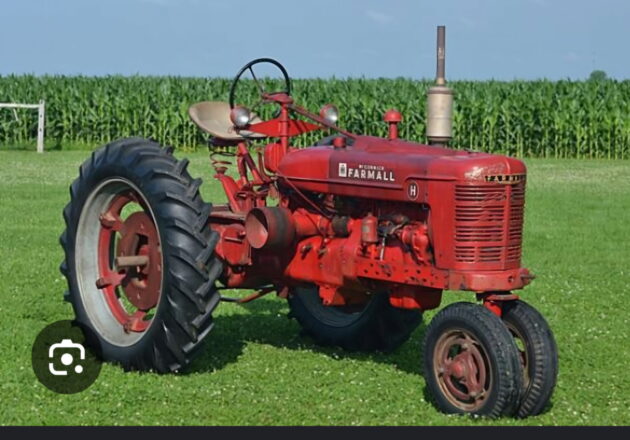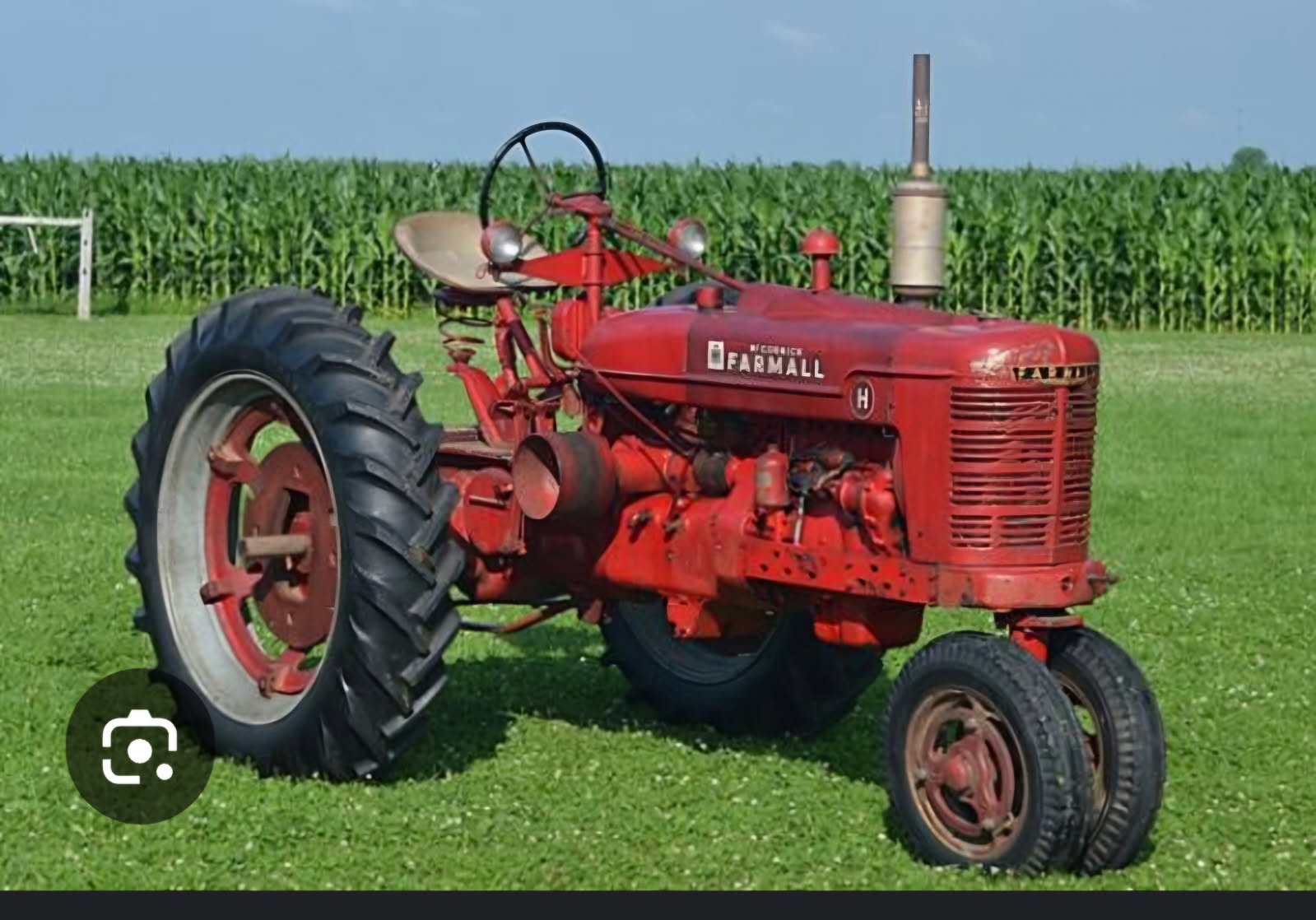
FCFI
April 20, 2025
There’s a guy on the Internet called the Farmall Fanatic. He lives somewhere in Pennsylvania and goes around from farm auction to farm auction and makes videos about his adventures. He always goes to auctions that have Farmall tractors for sale. Farmall’s of all sizes. It’s fun to watch.
It just so happens I have a Farmall H tractor. About 392,000 H’s of were produced between 1939 and 1954, and sold for between $850 and $1,650. I paid $1200 for mine in 2008. According to the serial number, it was manufactured in 1940 and was made to start on gasoline, then once it was warmed up a little, the operator would switch it over to the big fuel tank containing the cheaper fuel – kerosene. Now it runs 100% on gasoline. I mostly put no-ethanol gas in it.
A friend of mine has an H also. When he fuels his up, he first puts in a gallon of diesel fuel then fills it the rest of the way with no-ethanol, high octane (91) gasoline. I had not heard of this practice before, so I went ahead and didn’t take his word for it, but did a little research on the Internet instead. I found this explanation at fordsix.com: “Adding diesel to gasoline definitely lowers the octane rating of the gasoline. I own a 1941 John Deere Model ‘A’ tractor that was designed as an ‘All Fuel’ engine. It was intended to burn low-octane fuels such as kerosene, distillates, stove oil, etc. and is a spark ignition engine. During the 1930’s-early ’60’s the refineries produced a low-octane fuel called ‘tractor fuel’ that was somewhere between kerosene and stove oil in nature and was a viable low-cost option. The development of practical diesel tractors made the all-fuel machines obsolete.” (End quote).
That explains the reason for adding diesel fuel. I have never tried that and as of right now, don’t plan to. A few years ago, we took the top of the engine apart on my H and sent the head in to get it machined and reseat the valves. Before that, I had problems with the plugs fouling up all the time. Since then, I have had no problem whatsoever. I have Champion D 21 spark plugs in there, but have been told Autolite 3116 plugs are better. I cannot recommend either one. Up until the valve job, every plug I tried in there fouled up. I mostly fill it with no-ethanol gasoline, but sometimes, I will admit, E-10 goes in there. It doesn’t seem to make any difference. Plus, the cylinders have been honed out and it has M&W pistons, which I love. I don’t know what the bore is, but I know it has more power than your average H. When driving down the road, or working it under load (which hardly ever happens these days), it has that deep throaty Farmall sound. Sounds just like the Super MTA grandpa bought. I made a 60 second recording of it while driving down the road. When I need to unwind at night, I bring that video up and play it on repeat until I’m unwound. The sound of that engine lulls me into a passive spirit. By the way, that tractor is 85 years old this year.
A few days ago I drove the H into town to fill the gas tank. At the gas station, a young man about eight years old was riding his bicycle in the park next to the station. He rode over by me and commented on how much he liked my tractor. He hung around and chatted while I filled up. Another man came out of the convenience store and told me he liked my tractor too. He had Iowa plates on his car. Two comments from two total strangers. I did not expect that. I guess old tractors still capture some people’s fancy.
I also have a 1958 International 330 Utility tractor. There were a total of 4,262 units built at their Rock Island, Illinois factory. The tractor was originally priced at $2,900 in 1958. I bought this one at a farm auction about 20 years ago near Hazel Green, WI for $3400. It had a loader on it, which I took off and now sits in the shed waiting for a new home. About 10 years ago, we stripped it down to the bare bones and repainted it in Farmall 1206 red and ivory colors. It looks great – like a mini 1206. I have a little 5-foot bush hog mower on the back and use it to mow thistles and such in the pasture. There is nothing more relaxing on a summer afternoon than to take that out, put it in second gear, and spend four or five hours cutting grass and weeds. Other than painting it, and changing the fluids, I have done nothing to that tractor. It runs great and I don’t need to add any oil between changes. It is 67 years old this year.
Finally, we also have a 1936 Chevy Standard Series Coupe two-door car. It is mostly all original. We get it out and drive it in parades and around the neighborhood from time to time. It was my wife’s grandpa’s car which we bought off his estate. It has a decent paint job and runs good, but uses oil. It has a straight six motor and a three speed standard transmission. The speedometer goes up to 100 mph but its optimum cruising speed is about 35. Anything over that and it’s a full time job just keeping it in your lane. That car is 89 years old. We get a lot of enjoyment out of these old relics. We hope to someday pass them on to our children to enjoy as well.
Ecclesiastes 1:4 and 2 Corinthians 5:10: “A generation goes and a generation comes, but the earth remains forever” … “For we must all appear before the judgment seat of Christ, so that each one may be recompensed for his deeds in the body, according to what he has done, whether good or bad.”
(Kevin Cernek is Lead Pastor of Martintown Community Church in Martintown, Wisconsin).
